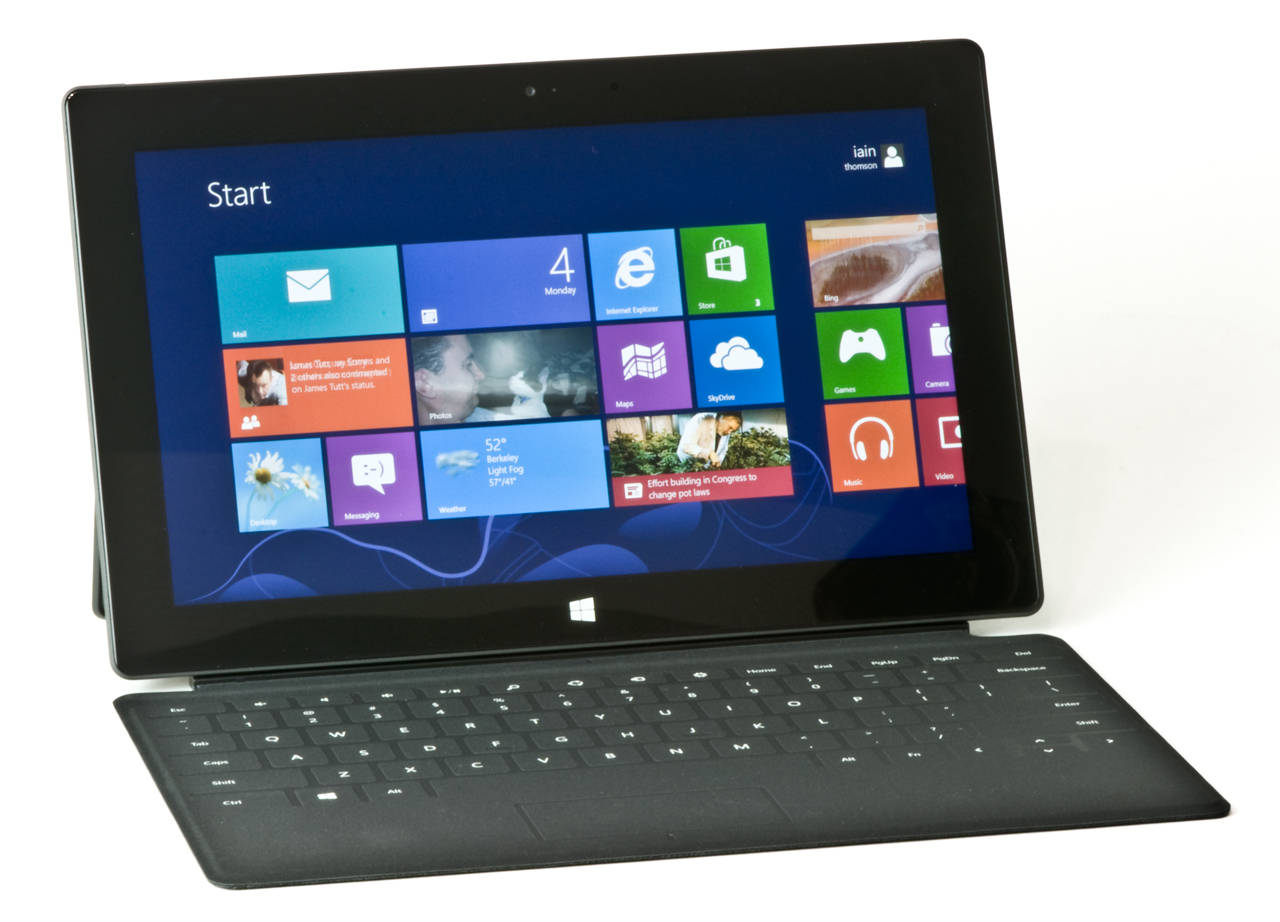 NEWS
NEWS
 NEWS
NEWS
 NEWS
NEWS
![]() Microsoft has high hopes for the Microsoft Surface. Some might say that its hopes are unrealistic, especially in light of Bill Gates’ somewhat spurious claims that iPad users are growing frustrated with Apple’s products. For sure, there’s no doubt that the Surface, as it stands now, is a unique device with plenty to offer that its rivals don’t have. The only thing is, these features don’t seem to be quite enough to tear consumers away from Androids and iPads just yet
Microsoft has high hopes for the Microsoft Surface. Some might say that its hopes are unrealistic, especially in light of Bill Gates’ somewhat spurious claims that iPad users are growing frustrated with Apple’s products. For sure, there’s no doubt that the Surface, as it stands now, is a unique device with plenty to offer that its rivals don’t have. The only thing is, these features don’t seem to be quite enough to tear consumers away from Androids and iPads just yet
Surface tablets look great. The screen resolution is crystal clear, crisp and comparable to the best tablets and netbooks money can buy. They can perform capably as both a tablet and a PC, running a full version of Windows 8, but there’s still a number of things Microsoft needs to figure out in order for the Surface to succeed.
Microsoft calls the Surface a “PC tablet” in the hope that it would appeal to both PC and tablet users alike. It is indeed a tablet with the functionality of a PC. As far as its concept goes, it’s a great product. It eliminates the need to own two devices – a tablet and a PC. In a perfect world, consumers would be clamouring to get hold of a Surface for themselves, or so you would think.
But we don’t live in a perfect world, and consumers have made it quite clear that they’re not all interested in PCs, or tablets that come with PC-like functionality. And as my colleague Mike Wheatley pointed out before, “Microsoft’s concept of tablets being portable PCs is at odds with consumer’s idea that tablets are basically just jumbo-sized smartphones.”
Simply put, consumers are perfectly happy with tablets serving as a second screen, using them purely for browsing the net and keeping themselves entertained. If people wanted something more, they’d buy a netbook or an Ultrabook. So if Microsoft wants the Surface to be a success, it needs to define whether it’s just a PC or a tablet, because clearly the idea that it can be both isn’t working.
Rumors have been flying around lately that Microsoft is planning to release newer, slimmer versions of the Surface – with 7-inch and 10.6-inch flavors the most likely bet. There’s certainly no problem with that as Microsoft wants the Surface to appeal to more people, and offering a bigger variety of form factors will certainly do help with that aim.
But one of the things they need to clear up is, will those tablets be RT or Pro versions of the Surface? Why is this important? Because the current RT and Pro versions cater to different markets. The RT is targeted at consumers, while the Pro is designed for business use, hence its capable of running desktop.
If Microsoft does indeed release newer, smaller versions of the Surface, it needs to figure out who its trying to appeal too, as at the moment all it seems to be doing is confusing buyers. There were reports that when the RT went on sale, people bought the device thinking it ran the full-blown version of Windows 8, only to be seriously disappointed when they arrived home. What Microsoft needs to do is focus each of its Surface devices on specific markets, and then clear up any confusion about what they are and who they’re for.
Microsoft prides itself on the fact that its Surface tablets can be equipped with a physical keyboard, since typing on a touchscreen device just isn’t productive. But this focus on having a physical keyboard isn’t really anything new, since both the iPad and Android tablets can be equipped with one anyway. As for Office, although it is the most popular office suite around, it’s not the only software in town. There are dozens of other options that people can use, most notably Google Drive, which provides a full office suite with documents, spreadsheets and other tools, all available for free.
THANK YOU